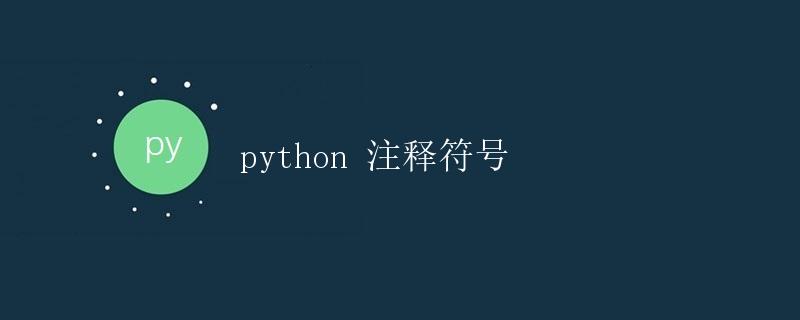Python中的装饰器

什么是装饰器
装饰器是Python中一种非常强大且灵活的功能,它主要用于在不改变函数源代码的情况下,对函数进行扩展和修改。装饰器本质上是一个 Python 函数,它可以接受一个函数作为输入,并返回一个新的函数作为输出。
装饰器的作用
装饰器的作用主要有以下几点:
1. 添加日志、性能测试、输入检查等功能;
2. 修改原函数的返回值或参数;
3. 减少代码冗余,提高代码复用性;
4. 优雅地扩展函数功能。
装饰器的基本用法
下面我们来看一个最简单的装饰器的示例:
def decorator(func):
def wrapper():
print("Before function execution")
func()
print("After function execution")
return wrapper
@decorator
def say_hello():
print("Hello, Python!")
say_hello()
在这个示例中,decorator 函数就是一个装饰器,它接受一个函数作为参数,并返回一个新的函数 wrapper。通过 @decorator 加在 say_hello 函数的前面,相当于对 say_hello 函数进行了装饰。当我们调用 say_hello 函数时,会先执行 wrapper 函数内的逻辑,然后再执行原来的 say_hello 函数。
运行结果为:
Before function execution
Hello, Python!
After function execution
装饰器的带参数
除了简单的装饰器外,我们还可以给装饰器传递参数。例如:
def greeting(message):
def decorator(func):
def wrapper():
print(message)
func()
return wrapper
return decorator
@greeting("Welcome to Python")
def say_hello():
print("Hello, Python!")
say_hello()
在这个示例中,greeting 函数接受一个参数 message,返回一个装饰器 decorator。通过 @greeting("Welcome to Python") 的方式,我们给装饰器传递了参数 "Welcome to Python"。当调用 say_hello 函数时,会打印出传入的消息。
运行结果为:
Welcome to Python
Hello, Python!
带参数的装饰器
有时候我们需要给装饰器本身传递参数,这时候就需要用到带参数的装饰器。例如:
def repeat(num):
def decorator(func):
def wrapper():
for _ in range(num):
func()
return wrapper
return decorator
@repeat(3)
def say_hello():
print("Hello, Python!")
say_hello()
在这个示例中,repeat 函数接受一个参数 num,返回一个装饰器 decorator。通过 @repeat(3) 的方式,我们给装饰器传递了参数 3。当调用 say_hello 函数时,会重复执行 say_hello 函数3次。
运行结果为:
Hello, Python!
Hello, Python!
Hello, Python!
使用类装饰器
除了函数装饰器外,我们还可以使用类作为装饰器。例如:
class Decorator:
def __init__(self, func):
self.func = func
def __call__(self):
print("Before function execution")
self.func()
print("After function execution")
@Decorator
def say_hello():
print("Hello, Python!")
say_hello()
在这个示例中,Decorator 类实现了 __init__ 和 __call__ 方法,将其实例化后可以作为一个装饰器来使用。当我们调用 say_hello 函数时,会先执行 Decorator 类中的逻辑,再执行原来的 say_hello 函数。
运行结果为:
Before function execution
Hello, Python!
After function execution
装饰器的嵌套
装饰器还支持嵌套的使用方法。例如:
def greeting(message):
def decorator(func):
def wrapper():
print(message)
func()
return wrapper
return decorator
def repeat(num):
def decorator(func):
def wrapper():
for _ in range(num):
func()
return wrapper
return decorator
@greeting("Welcome to Python")
@repeat(2)
def say_hello():
print("Hello, Python!")
say_hello()
在这个示例中,greeting 函数和 repeat 函数都是装饰器,我们可以将它们进行嵌套使用。当调用 say_hello 函数时,会先执行 greeting 装饰器,再执行 repeat 装饰器,最后执行原来的 say_hello 函数。
运行结果为:
Welcome to Python
Hello, Python!
Hello, Python!
总结
通过学习本文,我们了解了Python中装饰器的基本用法,包括简单装饰器、带参数的装饰器、带参数的函数装饰器、类装饰器、装饰器的嵌套等内容。装饰器是Python中非常强大的功能,可以帮助我们实现代码的功能拓展和修改,提高代码的灵活性和可维护性。在实际开发中,合理运用装饰器可以让我们的代码更加简洁和优雅。
 极客教程
极客教程